The second mystery of Mars
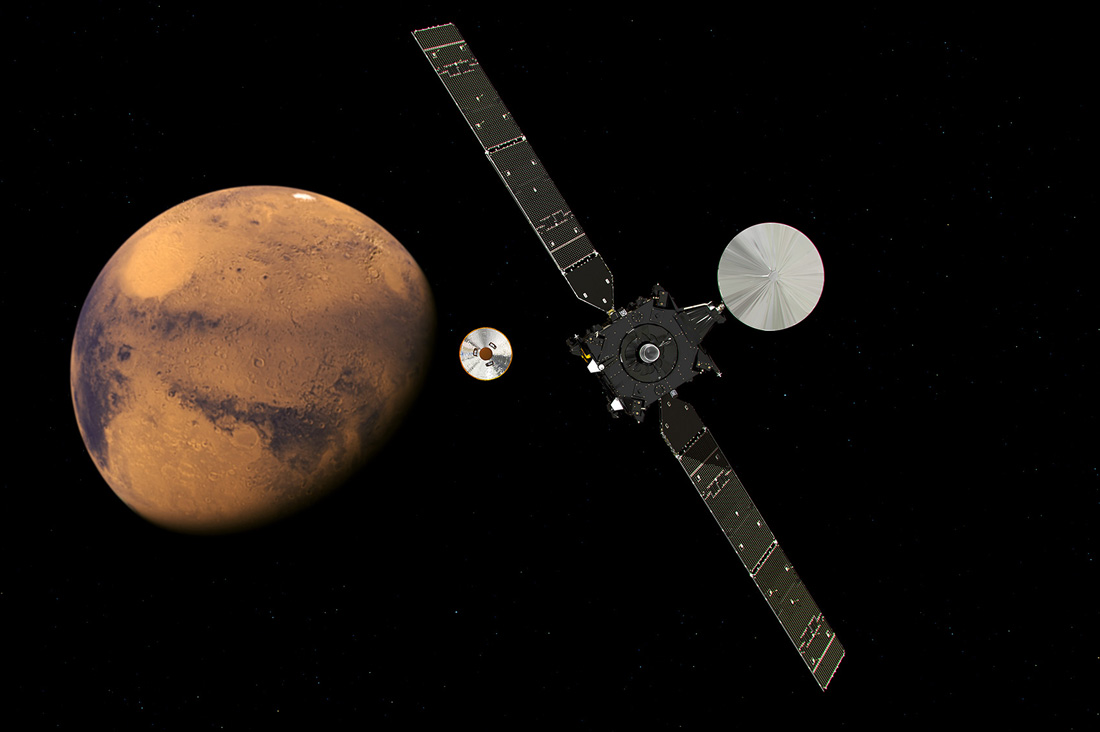
Today, at 12:31, the Proton-M rocket is launched from Baikonur, which will send spacecraft to Mars from the international ExoMars research mission. You can see the launch on Yandex, which at 11:45 will start broadcasting from the Roscosmos studio. Yandex asked me to tell more about the planned mission and its goals.
Everyone knows that no one knows there is / was life on Mars. This is the first mystery. Fifteen years ago, the second mystery was the water on Mars. Now it has already been solved many times - water has been found , mapped, studied from the surface. But by that time they had found a mystery no less important - Martian methane.
Methane is a simple organic compound with one carbon and four carbons. Methane occupies a large role in the life of mankind on Earth, because This is the main component of natural gas. Hydrocarbons are all called organic, but not all are organisms. However, it is now believed that up to 90% of terrestrial methane, including stored in the subsoil, has a biological origin. At the same time, in space it is also quite a lot. Methane was recorded on comets , in the atmosphere of Jupiter methane occupies a mass equal to three planets Earth, and methane rivers flow on icy shores on Saturn’s satellite Titan.
')
In 2003, astronomers reported sensational news - methane was found on Mars. Moreover, it was not evenly “smeared” over the entire atmosphere, but obviously it was to certain parts of the planet. Its concentration was rather insignificant: from 250 to 10 parts per billion, according to various estimates. The total volume of emissions in the spring of 2003 approximately corresponded to 42 thousand tons of gas, for comparison, this is about a third of the not the largest gas carrier tanker. Those. “Gazprom” could not be interested in such reserves, but it was very agitated by the scientific world.
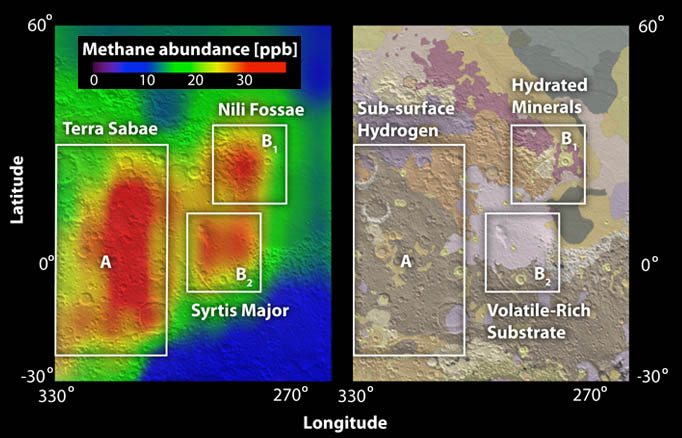
Methane emissions were simultaneously recorded by American and Russian astronomers, and a year later these data were confirmed from the Mars orbit by the Mars Express satellite, i.e. there could be no error. So scientists needed to find the answer where it came from. Explain everything Martian life is too tempting, but not enough reasoned. Methane can be the result of the geophysical activity of the Martian subsoil, it can be produced in some iron oxidation reactions ... One could definitely say that it is today's methane, by geological standards, since under solar ultraviolet organic matter in the atmosphere decays over several hundred years.
While scientists thought from where methane appeared on Mars, it disappeared. That is almost completely. It did not dissipate in the atmosphere, up to some average value, but simply disappeared, leaving only very insignificant concentrations, which were barely recorded with instruments available on that day.
Scientists have accepted the challenge, and by 2012 equipped the rover Curiosity, which is equipped with a sensitive gas analyzer, capable of detecting methane atmosphere. True, it was sent to the wrong place where methane emissions were observed, since geologists were central to the project, and they had their own goals in the Gale crater .
Having successfully landed and settled on Mars, Curiosity conducted the first studies and acknowledged that there is no methane. More precisely, not in the concentration that was available to his devices. Astronomers from Earth practically confirmed its results - methane and the truth was very little, at the limit of the resolution of Earth's spectrometers.
While the researchers were thinking about the Martian methane of Schrodinger, another year passed and Curiosity sent new data - the mysterious gas reappeared in Gale's crater ... And then it disappeared again.
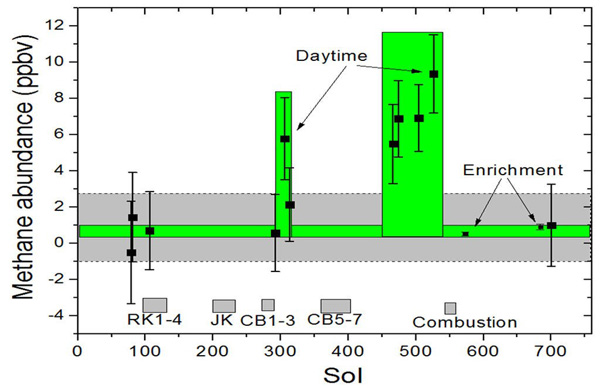
While American scientists tried to detect methane from telescopes from the Earth, and chased it on the rover, European and Russian planetologists decided to get down to business in their own way. Having gained tremendous experience in the joint operation of the Mars Express and Venus Express spacecrafts, and having considerably refined the research instruments, they decided to search for Martian methane from orbit. As already mentioned, Mars Express recorded methane, but its resolution on the distribution of atmospheric gases left much to be desired. Having accumulated experience, the Russians and Europeans decided to prepare an apparatus that can search for methane with an accuracy of no less than a thousand times the capabilities of the Mars Express. Thus was born the idea of the spacecraft ExoMars Trace Gas Orbiter.
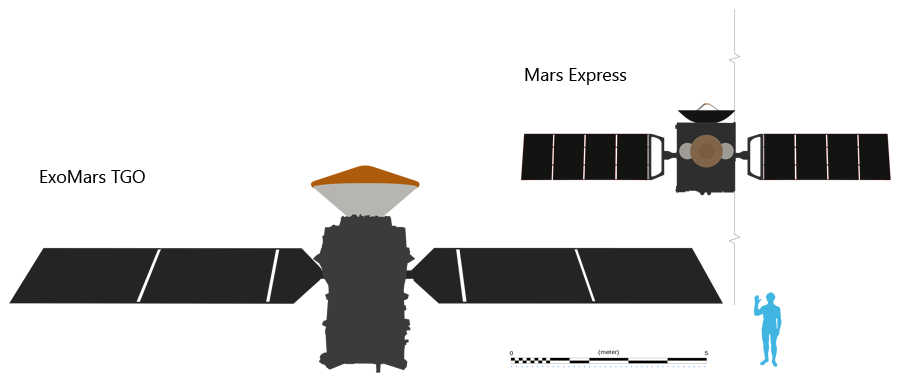
More precisely, the idea of the Europeans appeared a long time ago, but it was going through a difficult fate , until the European Space Agency signed an agreement with Roscosmos in 2013.
Cooperation with ExoMars is based on the principles already worked out on Express: Russia has pledged to provide two Proton-M missiles to launch a satellite and a rover, and Russian scientific instruments will be installed on the devices together with European ones. The first flight is sent to the satellite Trace Gas Orbiter. He must reset the Schiaparelli test descent module, and then for several years deal with solving a methane puzzle. At the same time he will be able to determine low concentrations of other gases in the atmosphere of Mars, if they are there. For example, if local volcanoes are not completely stoned, and at least a bit of volcanic gas flows, TGO should find these gases and determine their sources.
Generally, if the previous decade was devoted to the study of the geology of Mars, both from orbit and from the surface, now the “atmospheric” stage is already underway. Two years ago , the American MAVEN and the Indian Mars Orbiter arrived to Mars. The NASA device is clearly sharpened for the study of the atmosphere and magnetosphere of Mars, but it deals with the upper layers and their interaction with the cosmic wind. Those. MAVEN should answer the question of how Mars loses its atmosphere, while ExoMars TGO will look for possible sources of its replenishment from the depths of the planet.
Indian scientists are also interested in the methane issue, and even equipped a separate device to search for it, but so far they are only testing it. And we must understand that it is unlikely to show higher quality than the Mars Express. Still, the Indians sensibly assess their capabilities in interplanetary research and emphasized the more demonstrative value of their apparatus.
ExoMars TGO is a three-meter four-tonne spacecraft that carries on board a 600 kilogram Schiaparelli flying saucer and four main scientific instruments.
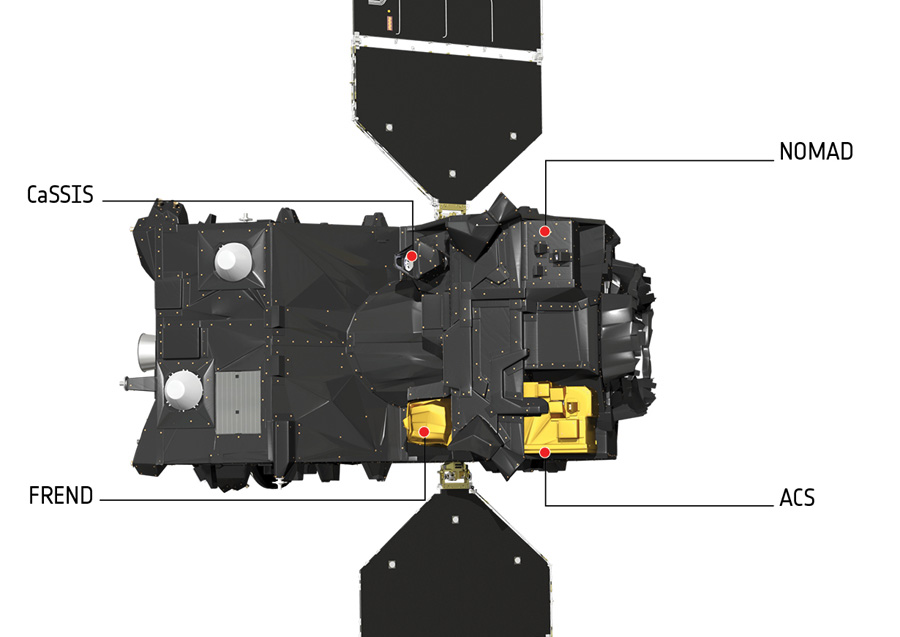
Schiaparelli is needed by Europeans to learn how to land on Mars. Previously, they had a bad landing experience in 2003. As it turned out , the Beagle-2 probe still managed to gently sit down, but stopped working without contact. Now, the ESA will try to repeat the experience at a higher level: by stuffing the device with sensors that will collect a lot of information during descent and landing.
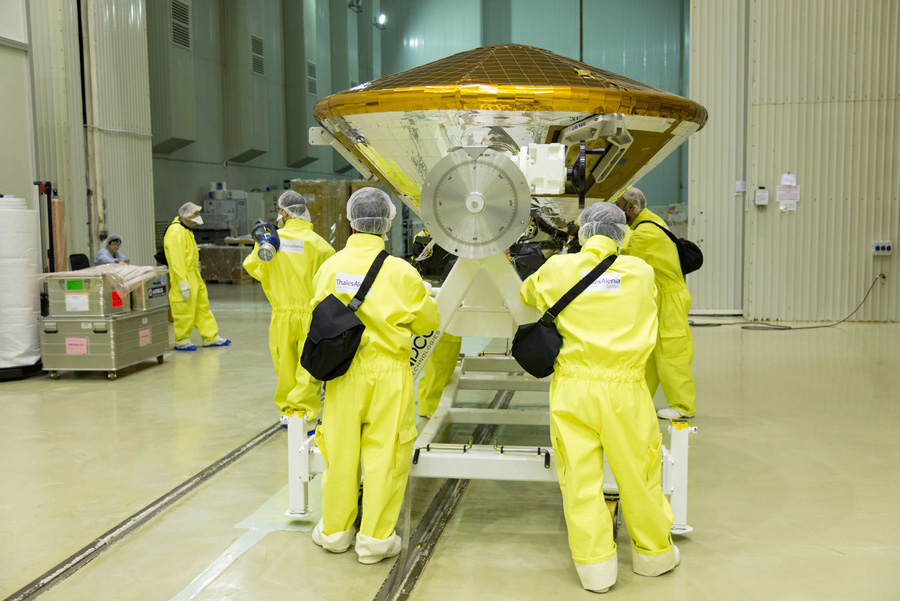
The next stage of the ExoMars project is the landing of the rover, Roskosmos takes over, so Schiaparelli is a start for the very distant future. Although, according to some reservations, it is clear that then Europe will threaten a new ambitious task - the delivery of soil from Mars.

At Schiaparelli there will be a climate research station, but it will work for only a week - until the batteries sit down. Long-term power supplies to the device is not provided. One curious detail of the device is a laser corner reflector.
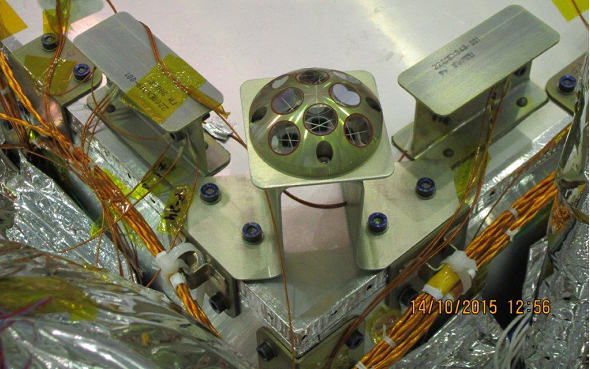
The ExoMars TGO satellite is not equipped with a laser, so the Schiaparelli corner reflector also remains for the future. Perhaps it will try to shoot even from Earth. Back in Schiaparelli, an interesting landing site is the plain of Meridian.
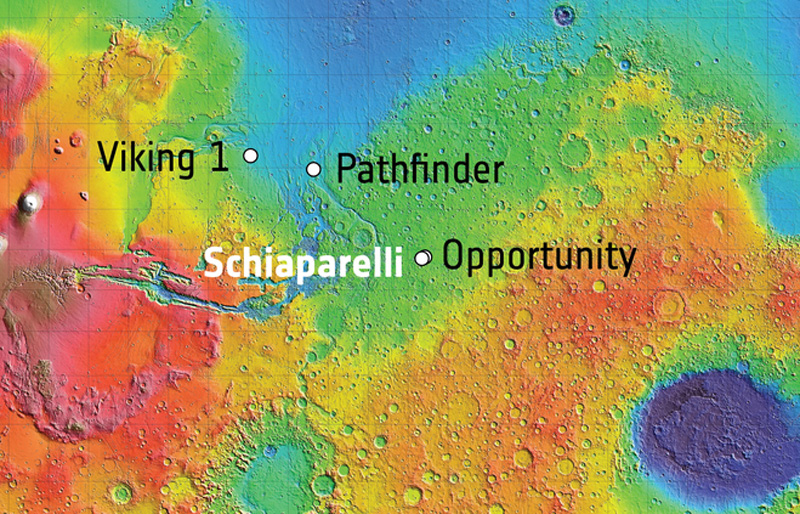
It is already running the Opportunity rover and this landing will be the closest approach on Mars of two landing gears. Despite the “proximity,” hundreds of kilometers will actually separate them, so Oppy will not be able to greet Schippy personally, at best, will try to observe the landing, although it is unlikely to see something from such a distance.
The two main scientific instruments ExoMars TGO: the European NOMAD and the Russian ACS are blocks of several spectrometers and partially complement each other, but capture different ranges of light waves. The main task of the mission is assigned to them - the mapping of atmospheric gases of Mars.
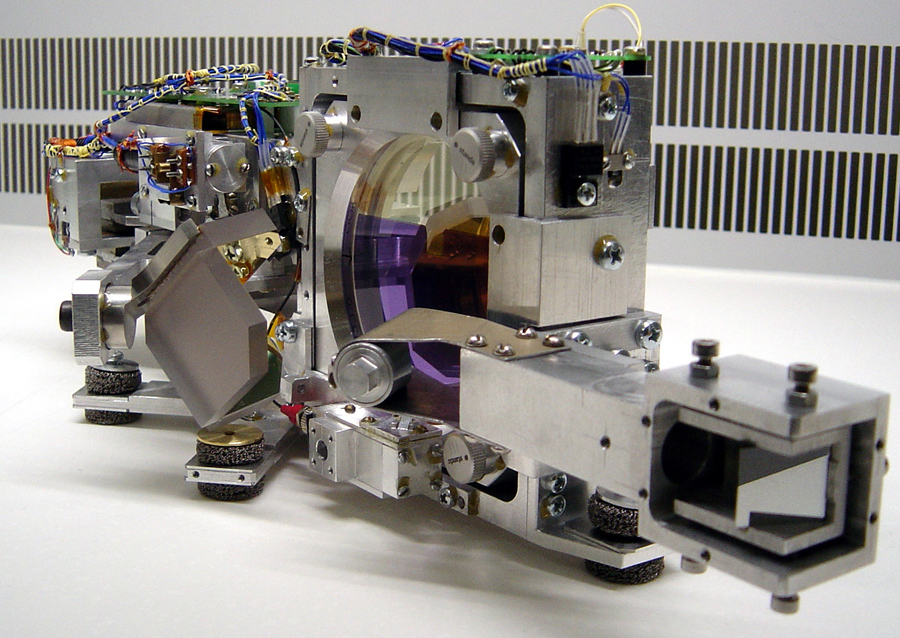
Both of them will use the same “secret method” - to observe the atmosphere to the light. Those. analyze the light of the sun sinking into the atmosphere of Mars on the horizon. This method, and the high spectral resolution of the instruments, makes it possible not only to determine gases in the atmosphere, but even to distinguish their isotopic composition. And this is a key indicator that, in theory, will allow to distinguish biogenic gas from geological emissions. The difference is in the atomic weight of carbon.
On Earth, life prefers to produce methane with a light isotope C12, since it is easier to bind with hydrogen as a result of biochemical processes. Geological processes are not so selective, and in them C12 and C13 form methane in approximately equal proportions. In addition to methane, ammonia can indicate biological activity, which is also released by living organisms in the same way as a result of vital activity. So far, no ammonia has been found on Mars, but if it is even slightly contained in the atmosphere, then TGO will find it. Of course, scientists know only earthly life, and, in fact, its signs are looking for on Mars, but for not having alternatives, you have to “search for where it is brighter”. In their defense, they say that the laws of physics and chemistry on our planets work in the same way, the geological structure is similar, and once the conditions were similar, so there is no reason to believe that the evolution of matter from the inanimate into the living was somehow different.
By the way, it is not completely clear how the process of the birth of life took place on Earth, and this, by the way, is an important argument in favor of the exploration of Mars. It would seem, why tumble hundreds of millions of dollars to find someone who let gas on another planet? But in order to understand how we were on our planet.
Now few scientists seriously believe that we can be Martian migrants, in the form of bacteria, who reached meteorites from Mars to Earth. Rather, the opposite option - finding local life on Mars will have to prove that it is really local, and not flown from Earth. But still, Mars is a relatively independent laboratory, where far from Earth could be repeated natural experiment to create living matter, capable of realizing themselves, the outside world, launching spacecraft and writing posts.
In addition to optical spectrometers, TGO also carries the CaSSIS camera, which can take pictures of the surface with a resolution of up to 5 meters, and carry out stereo surveying. The previous device ESA Mars Express has been conducting its surface observations for many years, and periodically pleases with chic panoramas . Its resolution is up to 20 meters, that is, TGO images will cover narrower lanes, but the details of the surface will be better seen. Pictures of this camera will be used, among other things, to select the landing site of the future Paster rover, which should start in 2018 or in 2020.
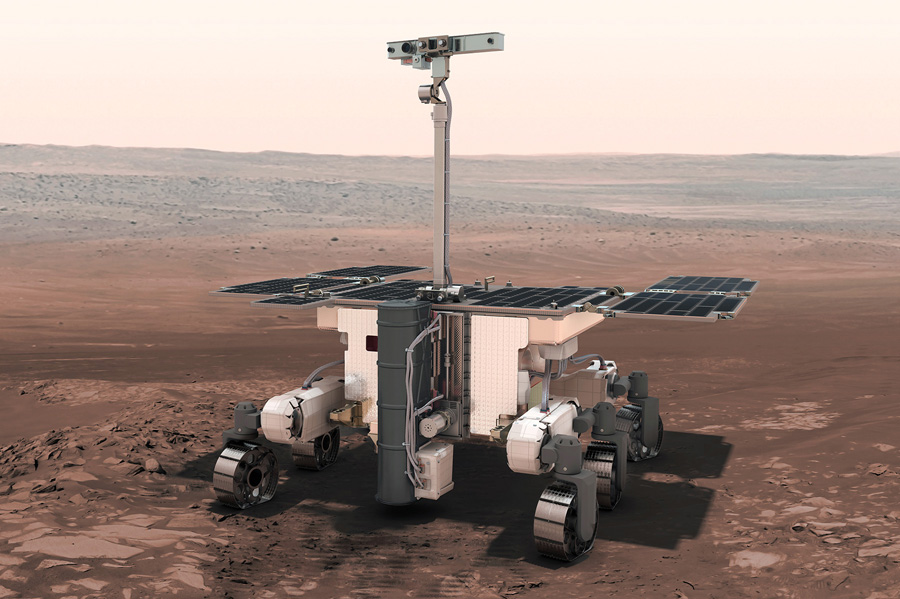
Unfortunately, the CaSSIS frames will not help us in the search for Mars-6 , but let us try to examine the small spot of the Mars-3 parachute. True, it is not known when a snapshot of the desired area will be taken.
The fourth TGO device is again Russian - the neutron detector FREND. His task is to map the water content in the soil of Mars at a depth of one meter.
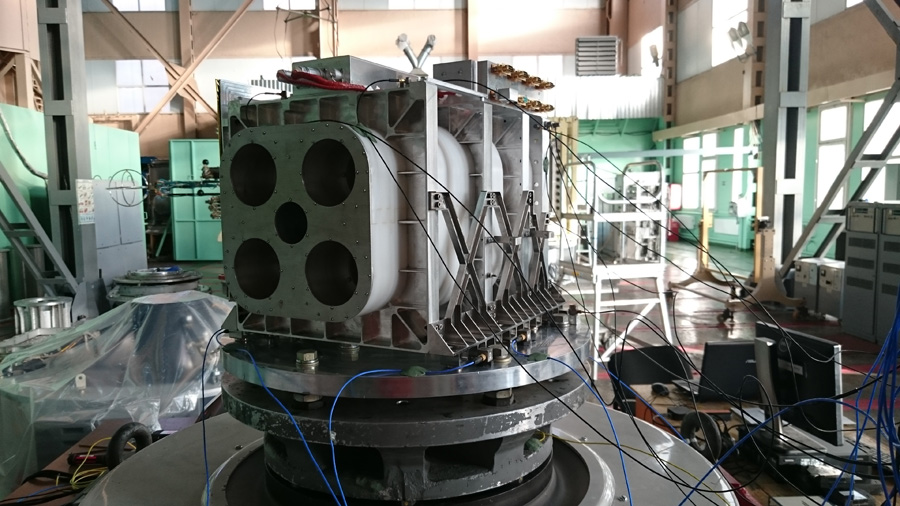
A similar device of the same Department of Nuclear Planetology is already flying from Mars, but its resolution is very low - actually equal to the satellite flight altitude.
Neutron detectors register neutrons with which the sun is bombarding the planet. Part of the neutrons "bounces off" from the planet, first plunging into the ground for half a meter or a bit more. The speed of their return depends on whether they met with hydrogen in the ground. The more hydrogen, the slower the neutrons fly. By registering the neutron velocity, it is possible to determine how much hydrogen is hidden in the surface, and the most likely reservoir of this volatile gas is water ice. The previous generation of the detector - HEND - has been flying on the American Mars Odyssey since 2001. Roughly speaking, he catches all the neutrons that fly from the surface, regardless of the angle of reflection. Therefore, it is very difficult to determine where the water distribution maps came from, which the HEND has helped to make too small a scale.
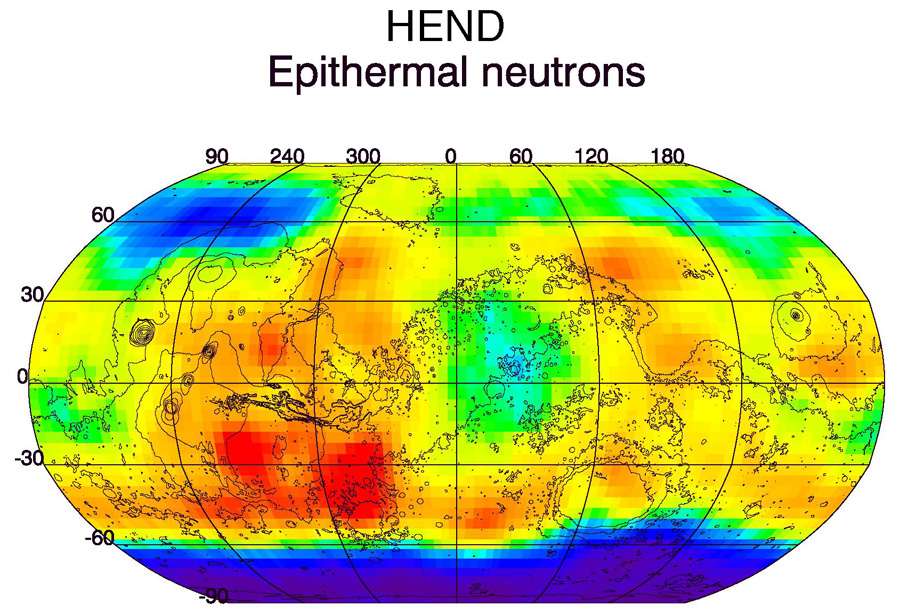
In the orbit of the moon, NASA LRO satellite tested the next generation of the device - LEND. He already has a so-called. A “collimator” is a mask that cuts off some of the neutrons, allowing you to take them only from a narrow stretch of terrain. This collimator made a noise in the lunar geology - finding water where it should not be, so that surely there is something interesting on Mars, it remains only to wait a few years until the required amount of data is typed.
The launch was successfully made today at 12:31 pm Moscow time, the Proton-M rocket coped with the task. The separation of the spacecraft from the upper stage successfully passed 23:13 MSK. The device is on a migratory trajectory to Mars. On the way he will stay 7 months.
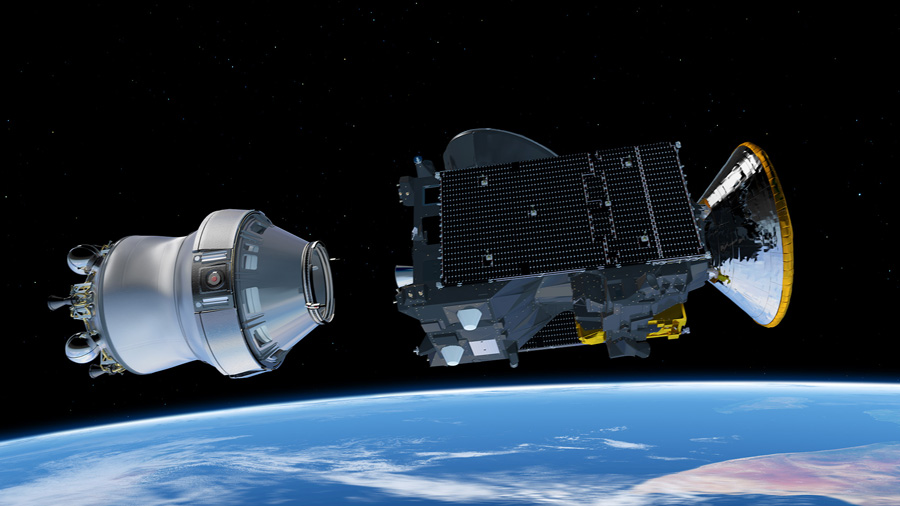
More information about the ExoMars project can be found on the website of the Space Research Institute of the Russian Academy of Sciences or on the website of the European Space Agency.
Source: https://habr.com/ru/post/279175/
All Articles